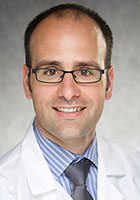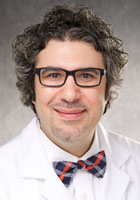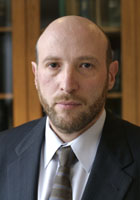Once again, the US Department of Veterans Affairs (VA) has generously supported the research efforts of our faculty. This year, five Internal Medicine faculty members have received VA Merit grants. The awardees have shared details about their projects below.
 Mary E. Wilson
Mary E. Wilson
Professor of Internal Medicine – Infectious Diseases
Professor of Epidemiology
Extracellular vesicles from parasite and host in leishmaniasis
Leishmaniasis is a diverse set of parasitic syndromes that affect individuals living in the many endemic regions. These include sites of ongoing US military operations in the Middle East and Central America. All forms of the disease are characterized by imbalanced immune response with excessive inflammation and suppressed microbicidal activity against these pathogens. Advances in diagnostic measures led to the recent recognition that a large proportion of US military personnel stationed in endemic regions of Iraq and Afghanistan in 2003-2011 have ongoing asymptomatic infection with L. infantum, which can cause a potentially fatal visceral form of disease. The current application is focused on detecting pathogenic mechanisms through which might be affecting the health of asymptomatically infected hosts, and more sensitive measures through which such infections might be recognized.
 Brian O’Neill, MD, PhD
Brian O’Neill, MD, PhD
Assistant Professor of Internal Medicine – Endocrinology and Metabolism
Regulation of Muscle Mitochondrial Protein Homeostasis by Insulin/IGF-1/FoxO Signaling
Uncontrolled diabetes decreases muscle strength in veterans leading to impaired recovery from illness or surgery, and is associated with poor energy production in mitochondria, the cellular powerhouses. Our previous work has shown that insulin and the closely related insulin-like growth factor-1 (IGF-1) controls muscle size by turning off FoxO proteins to control autophagy, or “self-eating.” Our new data indicate that decreased insulin/IGF-1 signaling itself causes mitochondrial dysfunction. The goal of this project is to see if insulin, IGF-1, and FoxOs also control mitochondria by regulating mitochondrial function, gene expression, and autophagy of mitochondria, or “mitophagy,” which will help us better understand the connections between diabetes and muscle weakness that contribute to disability in our veteran population.

Mohamad Mokadem, MD
Clinical Associate Professor of Internal Medicine – Gastroenterology and Hepatology
Regulation of glucose homeostasis via the molecular clock machinery and the hepatic vagus nerve after Roux-en-Y gastric bypass
The spreading of the obesity epidemic did not spare the US veterans and placed them, in fact, at higher risk for developing diabetes and cardiovascular diseases. Disrupted circadian rhythm behavior, such irregular sleep-wake cycles, night shift disorders, or night eating syndrome have been identified as risk factors for insulin resistance and obesity. Bariatric surgery was shown to be more effective than medical therapy in the management of obesity and diabetes, but the exact mechanism by which this surgery exerts its metabolic effects is not completely understood. We have new data suggesting that a functional molecular clock–which is the machinery that regulates the endogenous circadian rhythm–is required for gastric bypass to “work.” We will test the novel hypothesis that the clock within the brain regulates the clock expression within the liver via the hepatic vagus nerve in order to induce glucose improvement after gastric bypass.
 Long-Sheng Song, MD, MS
Long-Sheng Song, MD, MS
Professor of Internal Medicine – Cardiovascular Medicine
Understanding the multifaceted functions of MG53 in heart failure pathogenesis
Heart failure is the most common health concern for aging veterans. At the cellular and molecular level, heart failure is the result of cardiomyocyte contractile failure due to impairment of cardiac excitation-contraction (E-C) coupling process. E-C coupling is the central mechanism governing cardiomyocyte contraction. One critical structural component of E–C coupling is the myocyte transverse (T)-tubule system. In failing myocytes from animal models and human patients, we and others have shown that the regularly arrayed T-tubule system undergoes disruptive remodeling, leading to aberrant intracellular Ca2+ release and compromised myocyte contractility. MG53 is a novel muscle-specific protein involved in membrane vesicle trafficking and membrane repair following acute injury. MG53 has also been reported to have E3-ligase function, distinct from its role in membrane vesicle trafficking. In this project, we plan to dissect the roles of different functions of MG53 in cardiomyocyte T-tubule structure and function by using several novel mouse models generated from our laboratory. Understanding these molecular mechanisms will provide a new platform and guide us to design better MG53/T-tubule-targeted therapeutics for heart failure treatment.
 Leonid Zingman, MD
Leonid Zingman, MD
Associate Professor of Internal Medicine – Cardiovascular Medicine
Myokine musclin and exercise induced cardiac conditioning
Perioperative morbidity and mortality due to heart disease are important complications of non-cardiac surgery. In the United States approximately 27 million patients undergo non-cardiac surgery annually, with 50 thousand suffering a post- or intra-operative myocardial infarction (MI). The problem is also highly prevalent among our nation’s veterans. Specifically, the Veterans Health Administration performs about 400,000 surgical procedures per year, and data derived from the Veterans Affairs Surgical Quality Improvement Program (VASQIP) indicate that major adverse cardiovascular events (MACE) after non-cardiac surgeries occur in approximately 5%, while another study indicates that myocardial injury indicated by asymptomatic post-operative troponin elevation, a major risk factor for post-operative mortality, occurs in 13.9% of veterans undergoing non-cardiac surgery.
On the other hand physical activity is one of the most powerful modifiers of cardiovascular risk, with proven benefits both for those with healthy and for those with diseased hearts. Skeletal muscles are critical for mobility, but there is also an emerging understanding that they produce and secrete cytokines, termed “myokines,” which mediate local and systemic changes in order to promote exercise tolerance and overall health. We recently demonstrated that the myokine musclin is upregulated in response to physical activity and augments physical endurance. Our preliminary data also indicate that musclin production drives myocardial energetic adaptation necessary to increase cardiac stress resistance. Based on these findings we propose that musclin upregulation is critical for exercise-induced cardiac conditioning and that this effect utilizes molecular pathways that, once defined, may be harnessed for therapeutic benefit.
This project will use unique genetic mouse models and specially developed bioassays to determine the molecular mechanisms by which musclin integrates the skeletal muscle and myocardial adaptive exercise responses to promote energetic remodeling necessary for enhanced cardiac performance and stress resistance. The findings from this study are expected to provide a foundation for development of novel cardioprotective strategies for high-risk patients, such as those for whom exercise is not possible or well-tolerated due to illnesses or injuries, who require stressful surgeries and/or interventions.
Congratulation!